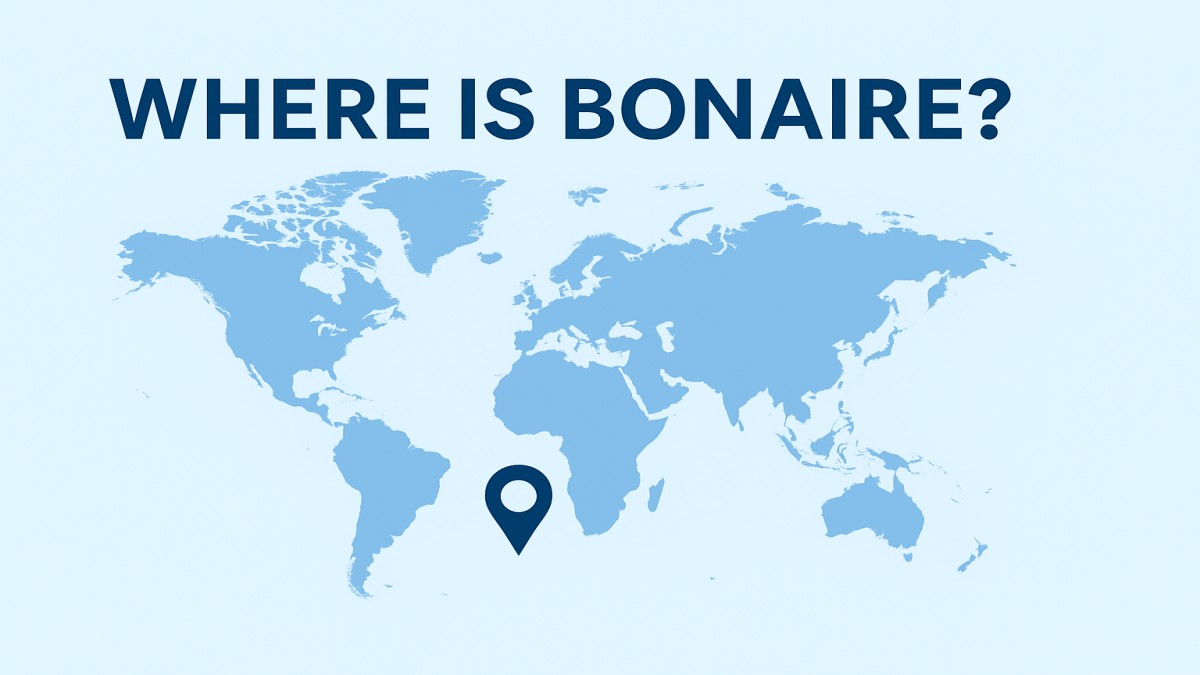others
Where Is Bonaire? The Hidden Gem of the Caribbean

Introduction to Bonaire
Bonaire is one of those rare islands that quietly steals your heart. Tucked away in the southern Caribbean, it’s a paradise for nature lovers, divers, and those seeking a slower pace of life. While bigger neighbors like Aruba and Curaçao often get more attention, Bonaire remains blissfully under the radar — and that’s exactly its charm.
Geographic Location
Bonaire sits about 50 miles (80 km) off the coast of Venezuela in the Caribbean Sea. It’s part of the “ABC Islands” along with Aruba and Curaçao. The island is a special municipality of the Netherlands, giving it a unique mix of Caribbean warmth and Dutch organization.
A Brief History
The earliest inhabitants were the Caquetio Indians, part of the Arawak tribe. The Spanish arrived in the 16th century, followed by the Dutch in the 17th century. Today, Bonaire operates under Dutch administration but retains its multicultural heritage.
How to Get to Bonaire
The easiest way to reach Bonaire is by air. Flamingo International Airport receives flights from the U.S., the Netherlands, and neighboring islands. Cruise ships also dock here, though less frequently than in other Caribbean destinations.
Climate and Best Time to Visit
Bonaire enjoys warm, sunny weather year-round, with average temperatures between 77°F (25°C) and 88°F (31°C). The island is outside the hurricane belt, making it a safe choice even during the Caribbean hurricane season. The dry season (February–August) is ideal for outdoor adventures.
Languages and Culture
Dutch is the official language, but Papiamentu — a creole blend of Portuguese, Spanish, Dutch, and African languages — is widely spoken. English and Spanish are also common. The island’s culture is a colorful fusion of European, African, and indigenous influences.
Currency and Cost of Living
Bonaire uses the U.S. dollar, which makes travel easier for American visitors. While it’s not the cheapest island in the Caribbean, it offers good value, especially for diving and nature activities.
Things to Do in Bonaire
Bonaire’s crown jewel is its marine life. The waters surrounding the island are protected as part of the Bonaire National Marine Park, offering some of the best diving and snorkeling in the world.
Bonaire National Marine Park
Established in 1979, this park protects coral reefs, seagrass beds, and mangrove forests. Divers and snorkelers must purchase a nature tag, which helps fund conservation efforts.
Washington Slagbaai National Park
Covering nearly 20% of the island, this park is home to flamingos, iguanas, and stunning landscapes. Visitors can hike, bike, or drive through its rugged terrain.
Food and Cuisine
Bonaire’s food scene is a delightful blend of Caribbean spices and European flavors. Popular dishes include goat stew (kabritu stoba), fresh seafood, and Dutch pancakes.
Accommodation Options
From high-end resorts with ocean views to budget-friendly guesthouses, Bonaire offers something for every traveler. Eco-lodges and boutique hotels add a unique touch to your stay.
Travel Tips for Bonaire
Bonaire is one of the safest islands in the Caribbean, but renting a car is recommended to explore fully. Respect local customs, especially when visiting rural areas or participating in cultural events.
Why Bonaire Should Be on Your Bucket List
With its unspoiled reefs, friendly locals, and laid-back charm, Bonaire offers a refreshing alternative to the more crowded Caribbean hotspots. It’s a place where you can disconnect, recharge, and truly connect with nature.
Conclusion
Bonaire is more than just a dot on the map — it’s a sanctuary for those who value authenticity, nature, and peace. Whether you’re diving into its turquoise waters or exploring its arid landscapes, you’ll find that Bonaire’s magic lies in its simplicity.
FAQs
1. Is Bonaire safe for tourists?
Yes, it’s one of the safest Caribbean islands, with low crime rates and a friendly atmosphere.
2. Do I need a visa to visit Bonaire?
It depends on your nationality. U.S., Canadian, and EU citizens can typically stay for up to 90 days without a visa.
3. Can I drink tap water in Bonaire?
Yes, the tap water is safe and of high quality.
4. Is Bonaire good for non-divers?
Absolutely! Hiking, windsurfing, birdwatching, and exploring its charming towns are great options.
5. How long should I stay in Bonaire?
A week is ideal to enjoy the island at a relaxed pace.

 entertainment2 months ago
entertainment2 months agoOnionFlix: Everything You Need to Know About This Streaming Website

 others1 week ago
others1 week agoNook vs Kindle: Which E-Reader Is Right for You?

 entertainment1 month ago
entertainment1 month agoPYT Telegram: A Complete Guide to Understanding, Using, and Maximizing It

 education1 month ago
education1 month agoHow to Become a Software Engineer: A Complete Guide






















